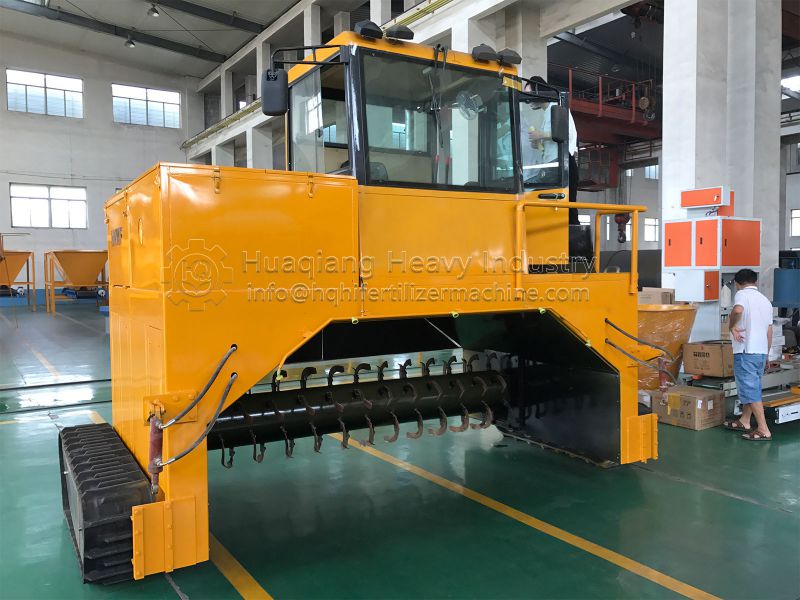In the field of organic fertilizer production, compost turning machines are the core tools of compost fermentation. Self-propelled compost turning machine and trough compost turning machine are two types of equipment widely used in the composting process. After years of development, Huaqiang Heavy Industry has researched and produced various types of compost turning machine, such as self-propelled compost turning machine (Windrow Compost Turning Machine) and trough compost turning machine (Hydraulic Compost Turning Machine).
- Working principle and structure
Trough type: It usually needs a fixed track or trough structure. When working, it runs along the established track and uses the stirring mechanism to turn the material. This structure enables the compost turning machine to maintain stable operation during large-scale and continuous production.
Self-propelled: It has the function of walking, and uses wheels as the moving method. This makes its structure more flexible and can freely shuttle between different material piles.
- Work efficiency
Trough type: Because of its stable structure and highly automated operation mode, it can handle a large amount of materials each time. In large organic fertilizer production plants, it can efficiently turn a large amount of materials, greatly shortening the fermentation cycle.
Self-propelled: Although it is highly flexible, the single processing volume is relatively small. However, in small organic fertilizer production sites or when processing different small piles of materials, it can quickly switch between different piles.

- Applicable scenarios
Trough type: Suitable for large organic fertilizer plants with relatively fixed sites, large production scales, and precise control of fermentation processes.
Self-propelled: More suitable for small farms or farmers with relatively small sites, scattered material stacking, or seasonal production of organic fertilizers.
- Selection recommendations
Trough type: If the annual output exceeds 5,000 tons, the site is fixed, and the fermentation quality is stable, the trough compost turning machine is recommended.
Self-propelled: If you handle scattered materials (such as straw, mushroom residue), have a limited budget, or need to take into account multiple agricultural scenarios, the self-propelled compost turning machine is more cost-effective.
The core difference between trough compost turning machines and self-propelled compost tuning machines lie in the balance between scale and flexibility. When choosing a compost turning machine, you should consider the production scale, site conditions, and capital budget.

